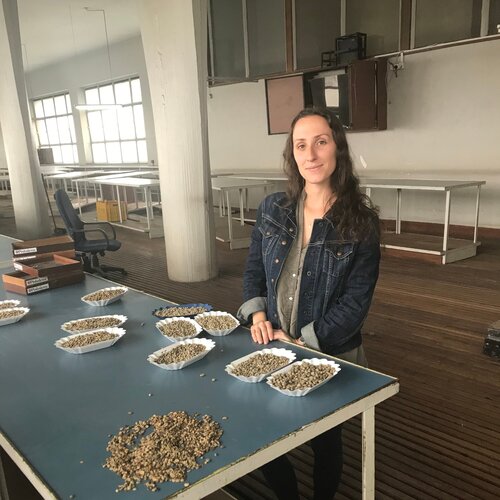
What I took away the most from this comprehensive trip through all facets of the Kenyan coffee industry was that it is becoming increasingly harder for farmers to make a livable wage growing coffee. This is not something unique to Kenya as it is happening all over the world. The market price for coffee worldwide has dropped, which means that farmers are getting less return for the same work they’ve put in for years. Part of this is due to the new popularity of ways to mechanically harvest coffee. Willson explained that there is a lack in coffee education for these smallholder farmers, which includes education about ideal growing methods pertaining to varietals, soil, optimal weather, and temperatures. Processing mills like the one we visited have been holding onto beans and cherries waiting for the market to drop and the prices rise so that they can get a higher return on their beans. The problem with this is that the beans then get older and run the risk of getting moldy, lowering the quality and therefore the monetary value of the coffee. Sometimes these farmers will not see any return on the coffee they’ve harvested for up to or more than a year. It is extremely difficult for these farmers and their families to survive on getting paid a small amount of money once a year.
Another issue smallholder farmers in Kenya face is the division of land. In coffee growing families, land is subdivided between children once their parents who own the property cannot work their land. For example, this means that a smallholder farmer who has two acres of land and has to divide the land by three for all three of their children, leaving each child with less than an acre to grow coffee on. Growing and harvesting coffee is very labor-intensive and growing a small amount of coffee is not worth the work that has to be put into it. This leaves most of these farmers to make the choice of uprooting their coffee and planting another crop or selling their land. Many young people are leaving the countryside and moving to the city where there are more opportunities, causing there to be less of a future for coffee in some of these areas. On our drive through the countryside, specifically in Kiambu, we passed by many lots of coffee that were for sale. A lot of the time these lands will be bought up and bulldozed to be used for building homes, condos or businesses. Willson told us that the more and more of these croplands are being uprooted to make way for developments.

Regardless of the difficulties of growing coffee, Kenya is still renowned for producing exceptional high-grade coffees. It is exciting to see a rise in specialty cafes and consumption of specialty coffees in Kenya. Every coffee growing country has different methods of operating on all levels, from the varietals grown to its trading laws. There are so many links in the supply chain to get coffee into our hands in the United States from the source, each one as important as the last. Throughout this day, I threw out all I knew (and thought I knew) about coffee, so that I could fully absorb what was being taught to me. Seeing how coffee is sourced and traded was invaluable, and gave me a greater understanding and appreciation for my daily cup of coffee.
Written by Annie Quiñones, Operations Manager of Snowy Owl Coffee Roasters






